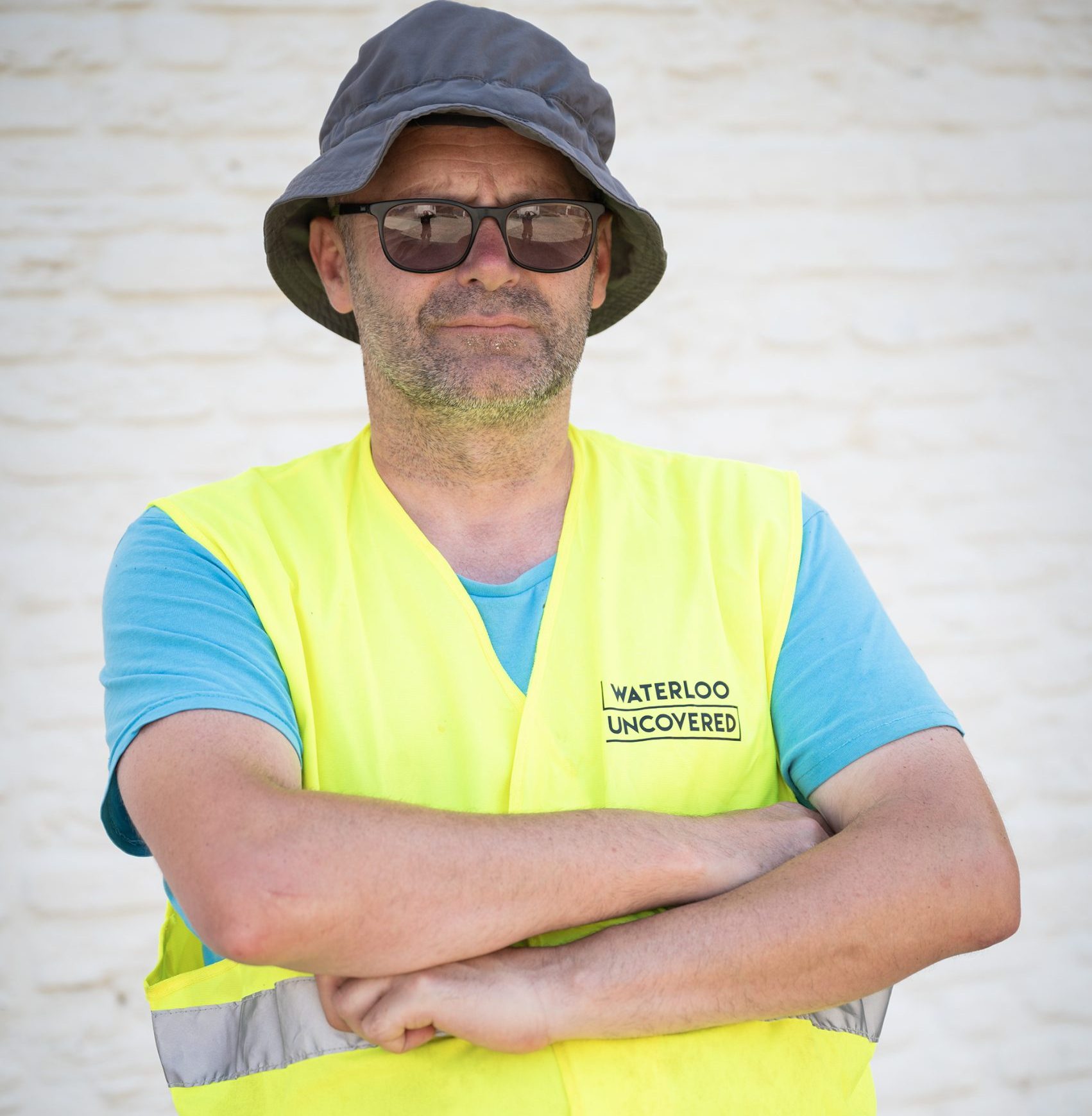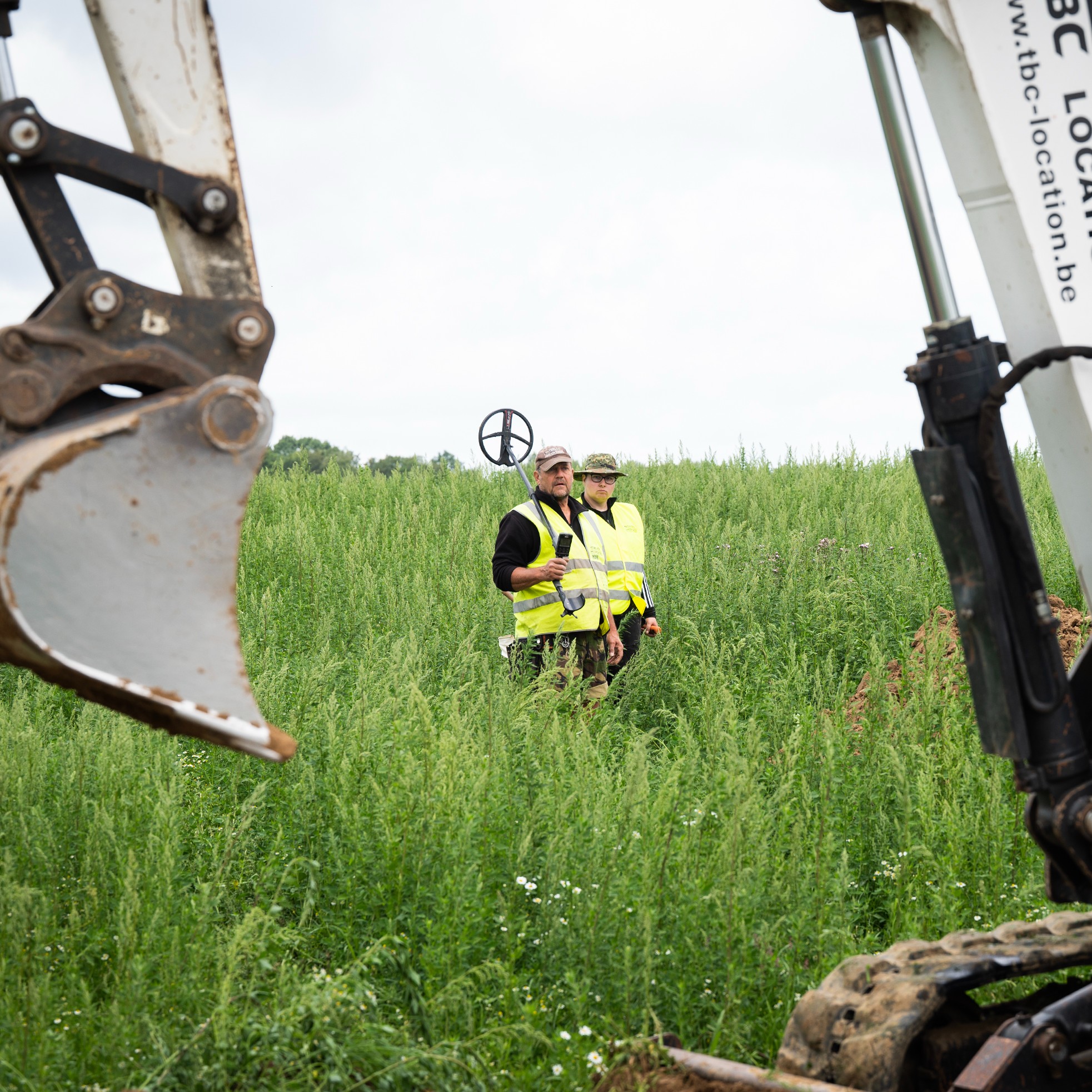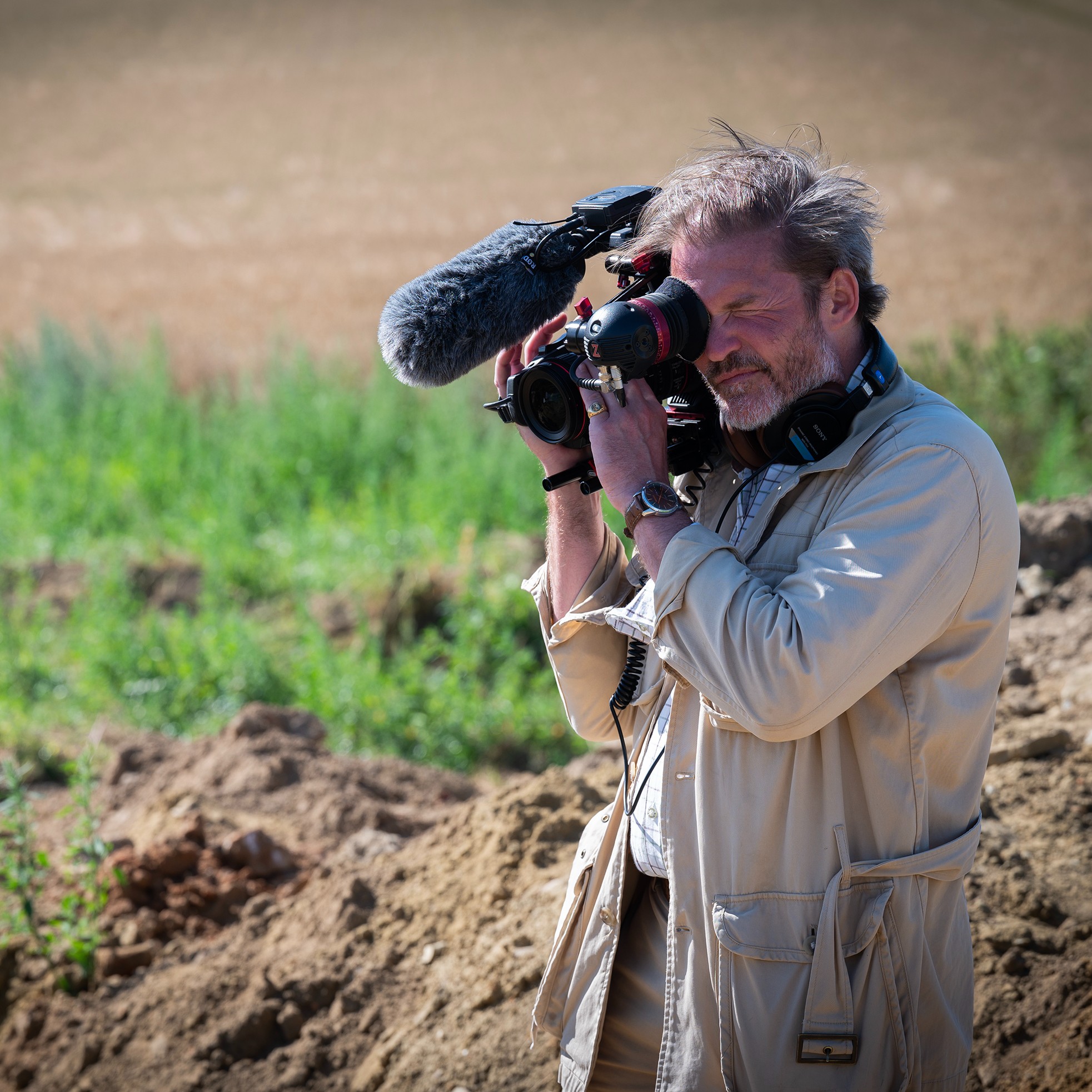Today, we have been working hard to make it back home in time for the match (in case you ask: England are playing Croatia in the Semi Final of the Football World Cup).
New trenches were dug, others were deepened, and in the chapel our team did their best to bring soldier’s accounts of the battle back to life in Reading to Remember.

Well-deserved break time after a morning’s hard work

One of today’s finds, a small silver clothing stud from about the 17th or 18th century

Founding member Charlie Foinette inspecting one of the finds
The Pond – possibly?
Outside the Northern Gate, a new trench was dug in search of what we suspected to be a pond. On early maps of Château Hougoumont, two ponds were recorded – although last year’s excavations showed that the first pond was not there. This has raised suspicions that the ‘ponds’ might just have been places with overflowing groundwater. An afternoon’s work with a digger, scraping back layers of topsoil, has revealed a deep layer of modern rubbish -bottles, plastic, ironwork and pottery -the sort of thing that might well get thrown into an available muddy hole in the ground. The excavation has also revealed a layer of dark silty soil consistent with the mud of a pond. So it looks like we have, indeed, established the location of one of the ponds marked on the ancient map. Further careful excavation over the next few days will explore whether evidence of the battle also ended up in the silt. Tomorrow, we hope to start uncovering new artefacts!

Digging into where the lost pond might be

Archaeologist Stuart Eve, hard at work

Locating the pond.
Archaeologist Stuart Eve speculates that the pond might have been dug for the farm animals. If that’s true, then it might help to explain why the pond is now out of use. During the Battle of Waterloo, the meadows would have been so torn up and soaked with blood that the cows would have been moved. Furthermore, the pond might have served as a dumping pit used by those cleaning up after the battle, thereby avoiding the effort of digging another pit.

The team setting up tag plates for visual cataloging of the finds

Our youngest team member on site
This makes the excavation of the pond even more interesting. Water-logged, swampy ground helps preserve organic remains. If indeed the pond was used to dispose of the wreckage of the battle, it might yield some very interesting finds!

Excavations at the Car Park are in full swing

Excited for our WU 2018 summary film!
Reading to Remember
In the small, quiet chapel of Hougoumont, a place used to shelter the wounded during the battle, we repeated what has become an important annual event for us: Reading to Remember.
Under the guidance of James Earley, each member of the Waterloo Uncovered team participated in an extended reading of first hand accounts collected from letters, diaries and books giving an eye witness view of the battle.They were written by both military men and civilians. Some were quite gruesome, others very touching. For Waterloo Uncovered, Reading to Remember is an important annual opportunity to pay our respects to those who fought in the battle, to reflect on their suffering and to invite people to support our work. Everyone did their best to help bring these witness accounts to life!
Below, you will find some images of our team members reading the letters. We also posted pictures of most of the readings on twitter, so go have a look! On our YouTube channel, there is a video about last year’s Reading to Remember.

Keanie Trick

Sam Wilson

Jonathan Buttery
Overall, a very productive day where we dug up the past in more ways than one!

Some yoga to relax during the break





